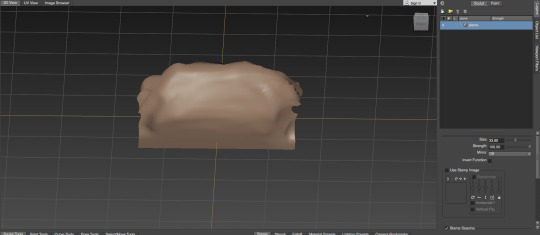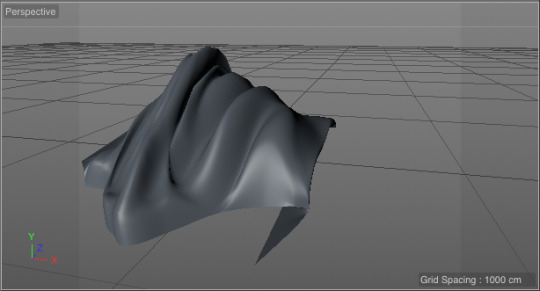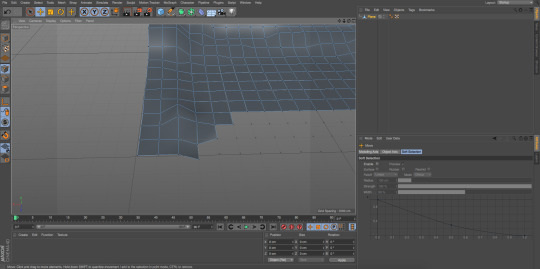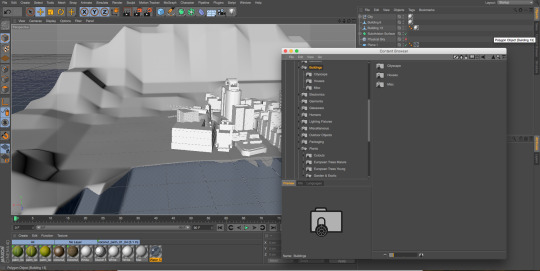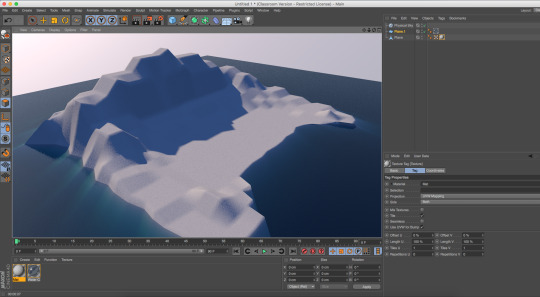Photo
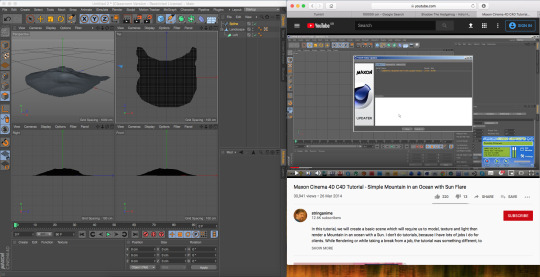


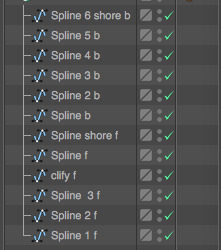
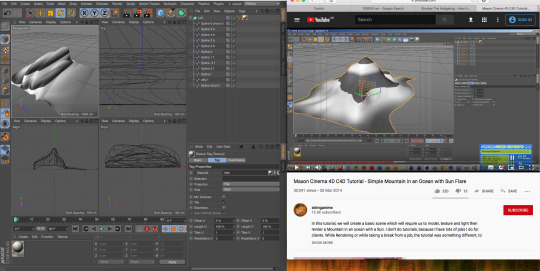

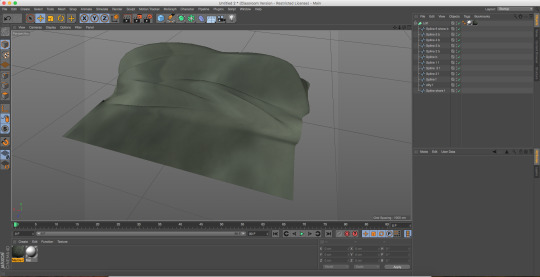
My first attempt at making an island with a mountain with Cinema 4D.
I found it difficult to figure things out at first, but then I decided to follow a tutorial of how to create a mountain on the software.
youtube
It was still a bit tricky at first, even with the tutorial because it was made 6 years ago and so some small stuff, like the selections and options has changed or been added. After a few confusions, I begin to get the hang of it. It’s still not the best, but I now know the basics.
Now that I have a bit more understanding how things work and what to do, I’m going to start actually making the island how I wanted.
0 notes
Text
Pirate Strongholds
Port Royal
During the “Golden Age of Piracy” in the late 17th and early 18th centuries, Port Royal, Jamaica stood as one of the most popular ports of call for thieves, prostitutes and pirates of every stripe. The small harbor’s association with marauding began in the mid-1600s, when Jamaica’s governors offered it up as a safe haven for pirates in exchange for protection from the Spanish. The buccaneers accepted the deal, and the town soon became a major staging ground for British and French privateers—ship captains commissioned by the Crown to disrupt Spanish shipping in the Caribbean and Atlantic. One of the most famous of these state-sanctioned pirates was Sir Henry Morgan, a Welsh captain who used Port Royal as a base of operations for raids on the Spanish strongholds at Portobello, Cartagena and Panama City.
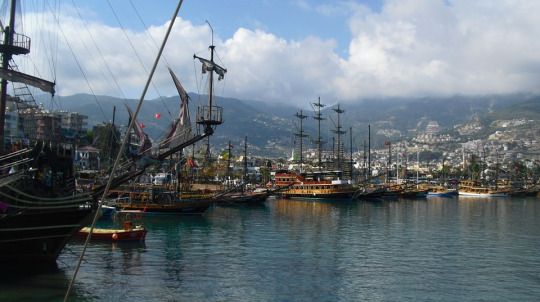
Port Royal prospered on the back of its pirate economy, and by the 1660s its streets were lined with taverns and brothels eager to cater to the whims of young buccaneers flush with Spanish loot. Contemporary accounts describe a seamy harbor overrun with gambling, prostitution and drink, where hard-living mariners often squandered thousands of Spanish reals in a single night. Even after the age of privateering had ended, the so-called “wickedest city on Earth” continued to serve as a retreat for a new brand of lawless, freelance pirates. But when these raiders began indiscriminately plundering shipping traffic in the Caribbean, Port Royal’s colonial authorities were finally stirred into action. By 1720, the town had begun to clean up its act and its “Gallows Point” became a notorious site for pirate hangings.
St. Mary’s Island
Peg-legged pirates and swashbuckling sea captains are usually associated with the Caribbean, but many of the most successful buccaneers plied their trade in the Indian Ocean. Beginning in the late 17th century, well-armed bands of freebooters used the African island of Madagascar as a base of operations for raids on European and Asian shipping. According to pirate legend, some of these pioneering thieves even set up a utopian colony called Libertalia, where they mingled with native women and organized a democratic government. Libertalia is most likely a seafaring myth, but Madagascar was home to several other pirate strongholds, most famously St. Mary’s Island on the northeast coast.
In the 1690s, St. Mary’s boasted a population of around 1,500 and served as a vital supply base for pirates like Captain Kidd, Thomas Tew and Henry Every. As part of an underground shipping arrangement, many St. Mary’s-based buccaneers would attack ships carrying exotic goods from India, and local traders would then sell the booty to crooked merchants in cities like New York and Boston. Some of these raids were among the most lucrative crimes in history.
Tortuga

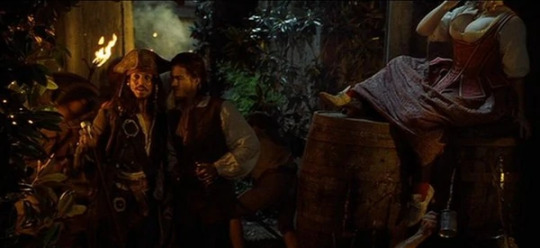

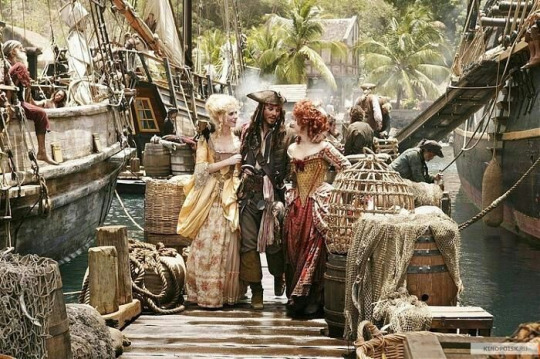
In the early 1600s, the rocky island of Tortuga served as the chief stronghold of a motley group of adventurers, thieves and escaped slaves who preyed on Spanish treasure ships in the Caribbean. These raiders started out as a band of French hunters on nearby Hispaniola (now Haiti), and it was the French word for their method of curing meat, “boucaner,” that inspired their feared nickname: buccaneers. The buccaneers fled Hispaniola for Tortuga around 1630 after the arrival of Spanish settlers, and they soon turned to the lucrative business of piracy. To support their operations, they made Tortuga into a fortified stronghold. Jean le Vasseur, a buccaneer leader who had once worked as a military engineer, even built a 24-gun castle called Fort de Rocher to help guard the island’s harbor.
Tortuga became a prime destination for pirates, attracting men of rough character from as far as England, Holland and Portugal. As more would-be marauders arrived on the island, they organized themselves into a loose fraternity of thieves called the “Brethren of the Coast” and developed their own code of conduct. Many of the Brethren received privateer commissions from England and France, and they proved a thorn in the side of the Spanish, who responded with repeated attacks on Tortuga. This amuse me.
Clew Bay
The west coast of Ireland might not seem like prime pirate territory, but in the 16th century the rugged shores of Clew Bay served as the stronghold for of one of history’s most formidable lady corsairs. During a time when Ireland was ruled by dozens of local chieftains, Grace O’Malley defied convention and emerged as the leader of a seafaring clan who controlled the coastlines through intimidation and plunder. From her base of operations at Rockfleet Castle, O’Malley—also known as Granuaile—commanded hundreds of men and some 20 ships in raids on rival clans and merchant ships. She also ran afoul of government officials, who made repeated attempts to curb her activity. When a fleet from Galway besieged her castle in 1574, O’Malley led her pirates in a counterattack and forced the ships into a retreat.
O’Malley was captured in 1577 and spent several months behind bars, but by the 1580s she was once again stalking the seas surrounding Clew Bay. Her hands-on style of leadership earned her a reputation as a ruthless fighter—a popular legend states that she once gunned down a Turkish buccaneer only a day after giving birth—but she also showed a keen understanding of politics. When English colonial authorities eventually captured her son and impounded her ships, O’Malley petitioned the Crown for redress and then set sail for England. During a historic 1593 meeting with Queen Elizabeth I, she personally negotiated her son’s release and even secured the return of her fleet.

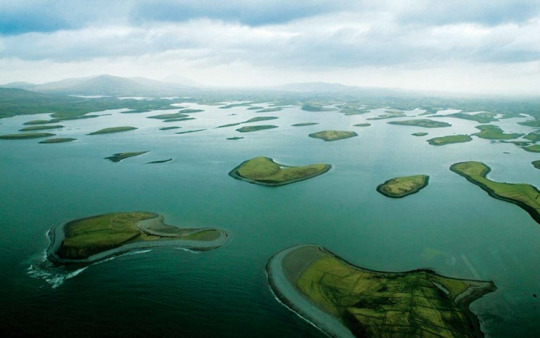
New Providence
Long before it became a popular stopover for cruise ships and vacationers, the Bahamian island of New Providence was known as a lawless “nest” of pirates—and for good reason. The island sat in the center of the well-traveled trade lanes between Europe and the West Indies, and its capital of Nassau offered a safe harbor for marauders to repair and resupply before setting sail in search of plunder. By the 1710s, New Providence had become a popular gathering place for some of the Caribbean’s roughest customers. Among others, raiders like Blackbeard, Stede Bonnet and Charles Vane were known to haunt its seaside taverns and bars.
Pirate activity in the Bahamas eventually became so rampant that the British government feared for the long-term survival of its colony. In 1718, the Crown dispatched three warships to New Providence along with a new governor—the privateer-turned politician Woodes Rogers. Governor Rogers offered a pardon to any pirates who surrendered—some, like Benjamin Hornigold, even became pirate hunters—but he showed little mercy to those who resisted. In December 1718, he sent a chilling message to unrepentant buccaneers when he executed a band of convicted pirates in Nassau. From then on, New Providence was slowly transformed from a playground for thieves into one of the main headquarters for anti-piracy operations in the Caribbean.



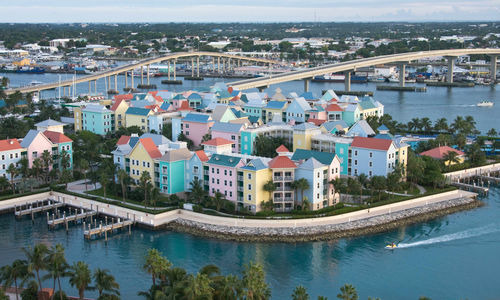
Barataria Bay
The swampy islands surrounding Barataria Bay, Louisiana, once served as a sanctuary and safe harbor for the famed pirate-turned-patriot Jean Laffite. In the early 19th century, Laffite and his brother Pierre led a syndicate of thieves who terrorized shipping in the Gulf of Mexico. Working as privateers for the upstart Republic of Cartagena, Laffite’s buccaneers plundered Spanish merchant vessels and then smuggled stolen goods and slaves into New Orleans. By the 1810s, their illegal colony at Barataria Bay had grown into one of the busiest black market ports in all of North America. Between 500 and 1,000 marauders frequented the area, and more than a dozen pirate ships regularly occupied its harbor.
In 1814, Laffite famously interrupted his pirate activity to play an unlikely role in the War of 1812. After receiving an offer from the British—who hoped to use Barataria as a point of access to New Orleans—Laffite instead offered his services to the United States in exchange for clemency for his past misdeeds. Laffite and his followers went on to serve with distinction in the Battle of New Orleans under future President Andrew Jackson, and he was rewarded with a full pardon. But despite winning a clean slate, Laffite would not stay away from a life of crime for long. He later led his men to Texas and formed yet another pirate haven on Galveston Island.



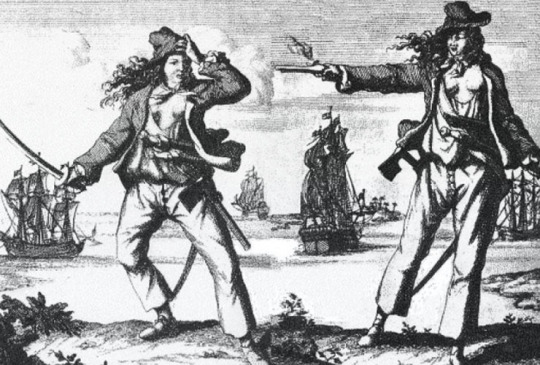
- Grace O'Malley the Pirate Queen, Co. Mayo West of Ireland
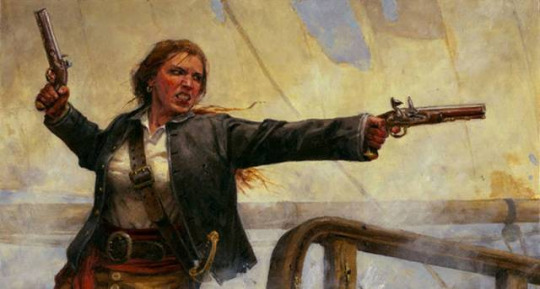


Grace O’Malley, The Pirate Queen with Queen Elizabeth I
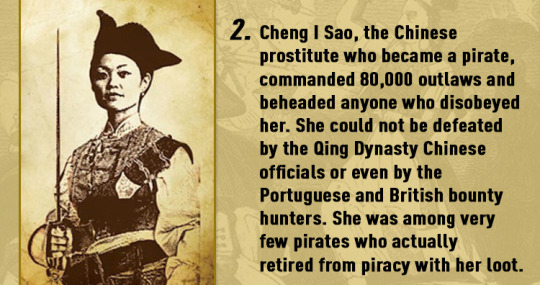
0 notes
Photo
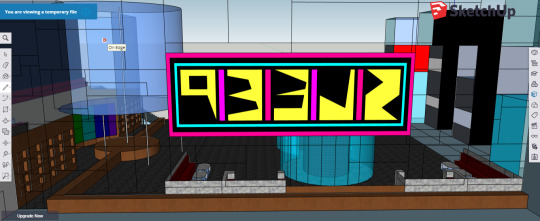
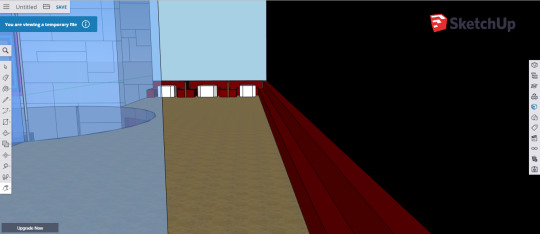
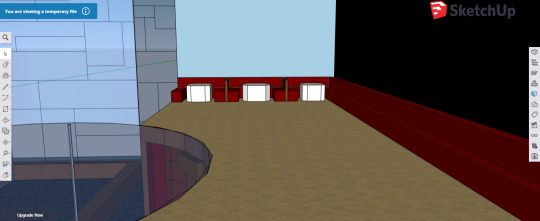
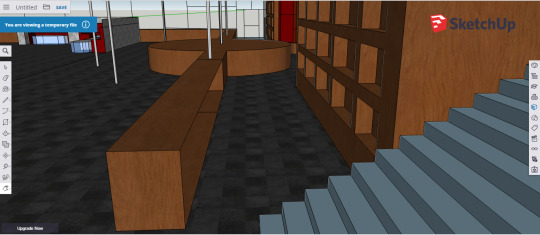
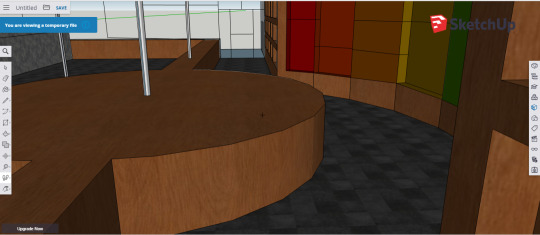
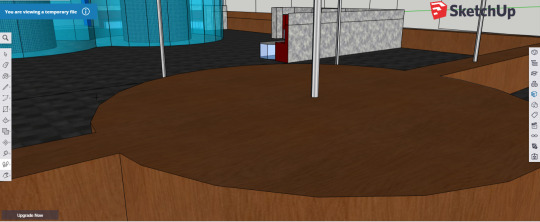

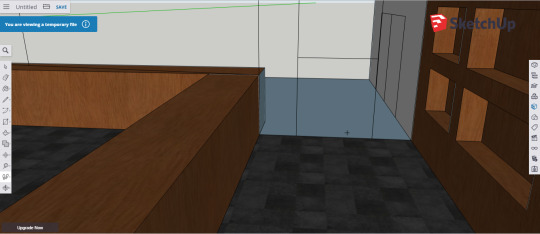
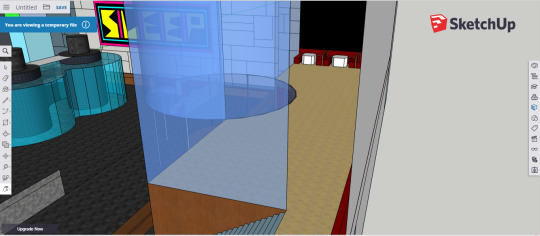
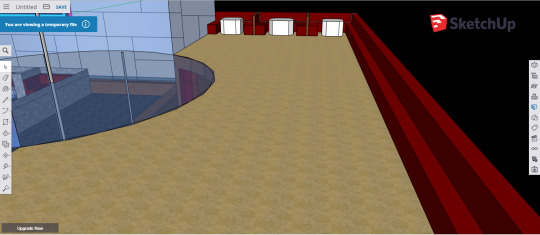






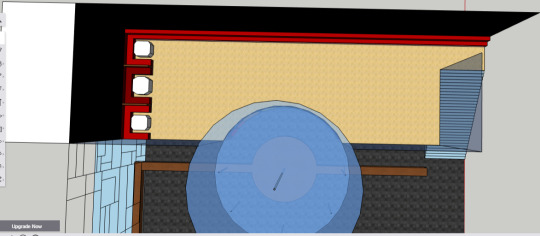

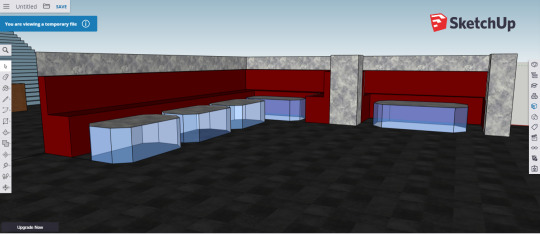
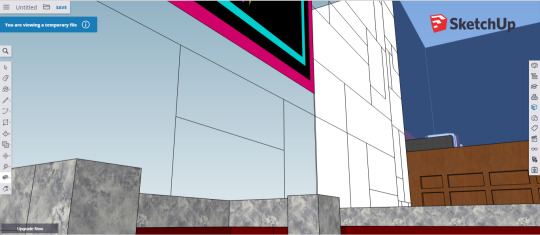

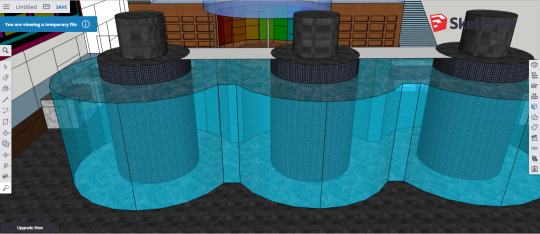

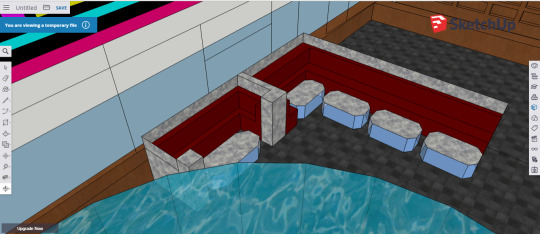
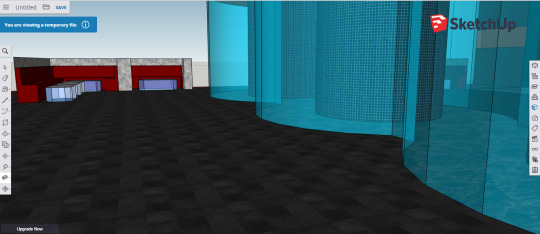
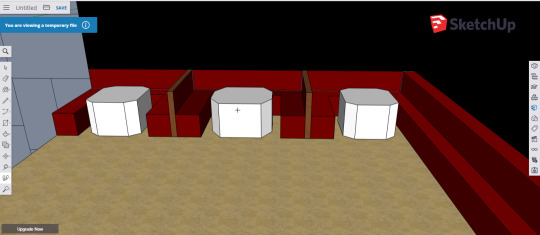

I had used SketchUp to create one of my setting/Concept art in 3D.
It took me 4 days and 4 sleepless nights to make this, I’d done it from 13/3 and had stayed up finishing it (although I could spend more time on it by polishing it and making it more accurate with most of the furniture and the ‘poles’ at the back) and taking pictures of it from different viewpoints. I might change the font of the “SLEEP” sign and I was going to add a few more tables on the left ground, but it took a lot of effort trying to make the ones in the middle, so I didn’t do it. I should've made stools for the bar.
This Model is of the Nightclub/Strip club. I wanted make it look like a warehouse that has been modified to take on a very large modern nightclub. It has a glass-tank swimming pool in the middle, a glass see-through floor on the right, neon-lights with the sign at the back, poles, ‘private rooms’ to the left, and a modern sign.
I fondly named it “SLEEP”.
So a few little jokes can be made.
I had started the Model as a fun personal side project, but now, after taking a lot of time and effort to making it, I see that I can use the screenshot to my advantage. With one of the Comic book Artist that I had done research on, he would make tiny thumbnails of his comic and then enlarge it and trace over it. I could do the same with tracing over the screenshots with different angles of the setting and use it as background as I can draw the extras and characters over it.
0 notes
Text
Concept Art
Jason Chan
League of Legends
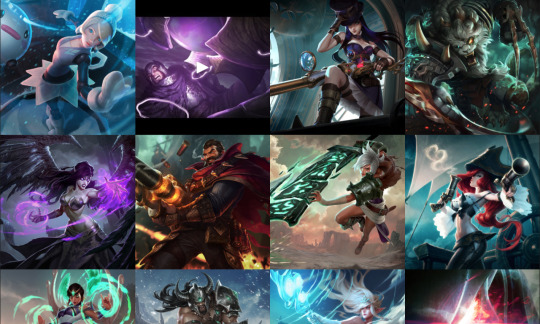
Mass Effect 3

Dragon Age
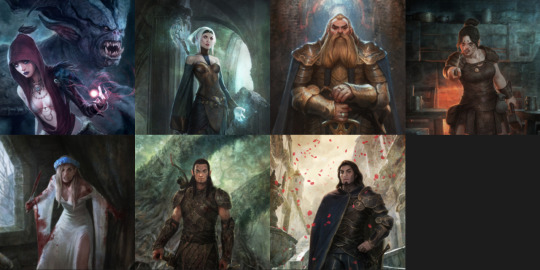
Magic: The Gathering
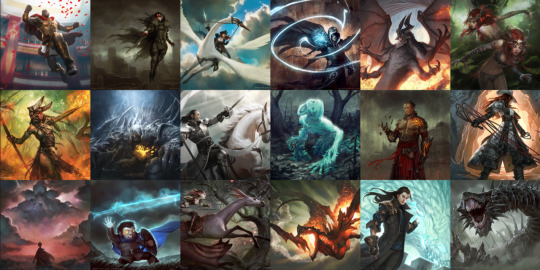
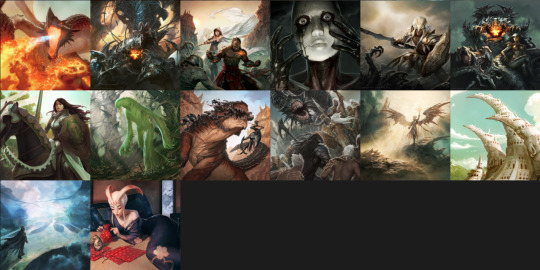
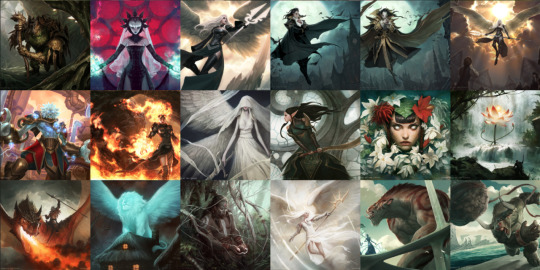
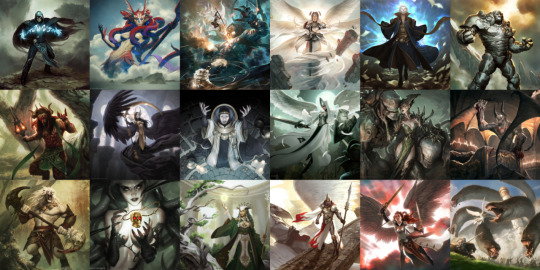
Sims 4

Project 30XX

Fish Bowl
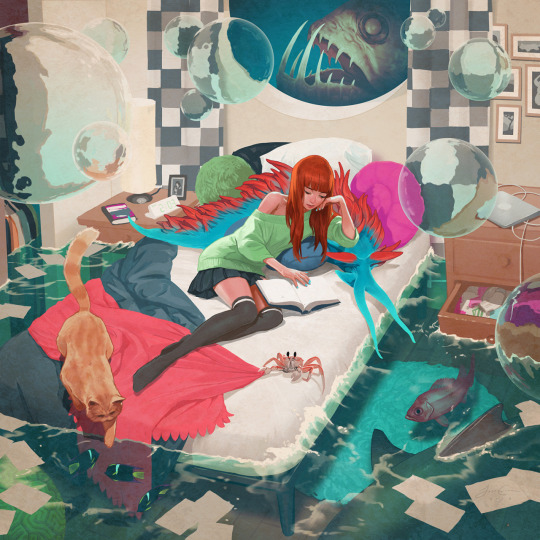
The Broken Empire

Widdershins Adventures
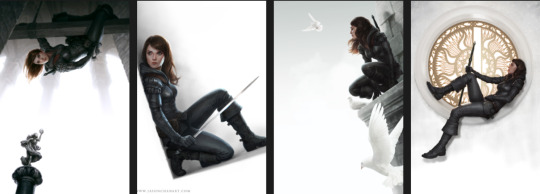
Book of the Order
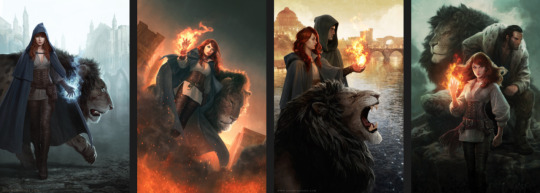
The Lotus War

0 notes
Text
Comic Art
Paolo Rivera

https://paolorivera.blogspot.com/


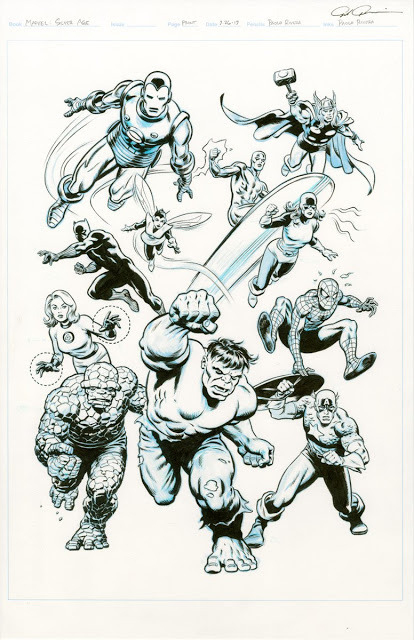

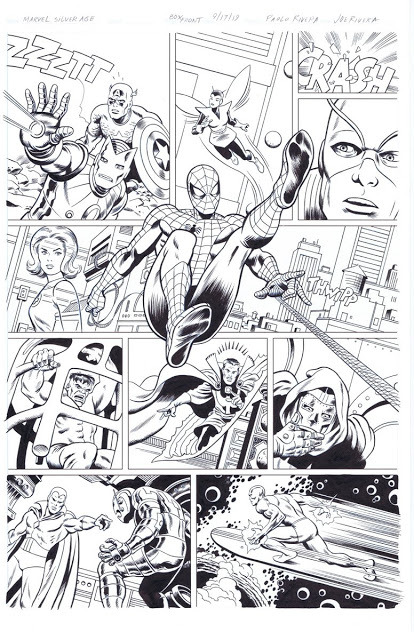

Paolo Rivera started working for Marvel Comics in 2002. Although he began his career painting in oil, he has since moved on to penciling, inking, and coloring. He was born and raised in Daytona Beach, FL, and graduated from the Rhode Island School of Design in 2003, where he studied with David Mazzucchelli. He broke into the comics industry thanks to writer Jim Krueger, whom he met at Megacon in 1999.
Penciling Art
Penciling (drawing/art work which is just graphite) is what most comic book artist achieve first before they bolder up their work, by going over their pencil drawings with inking, and finish it off with coloring.
Pencil art are known to be used as ‘Comic art’.


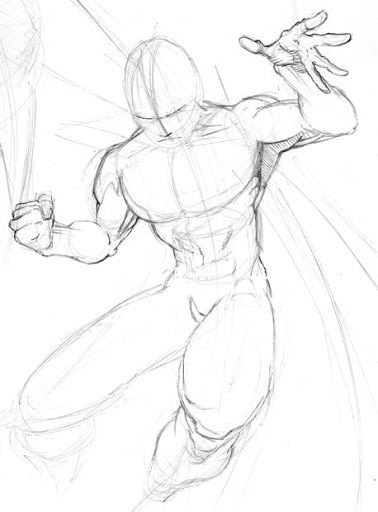

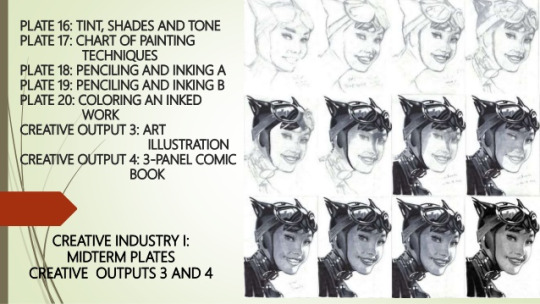
Stephen Platt
Stephen Platt was a comic artist who rose to prominence in the nineties, first drawing Moon Knight for Marvel and then Prophet for Rob Liefeld at Image/Extreme Studios and then his own book, Soul Saga. He went to work in movies, and recently returned to create covers for Marvel and looked to be creating new work.
youtube
Comic Book Pencilling with Stephen Platt
In this demonstration, Stephen Platt covers how to create a fully penciled page from beginning to end. He begins with exploration in the thumbnail stage and enlarges the chosen rough thumbnail using a photocopier and lightbox. During the course of the demo, Stephen shows how he indicates change in form, graduated shadows, texture and mass, all while maintaining a dramatic graphic expression.
The “exploration in the thumbnail stage and enlarges the chosen rough thumbnail using a photocopier and lightbox.” is a great idea that i can use for my project and I believe it will make it much easier for me to carry out.
Simon Bisley
http://heroesof2000ad.blogspot.com/2017/01/no-93-simon-bisley.html
Simon Bisley is an award-winning British comic book artist best known for his 1990s work on ABC Warriors, Lobo and Sláine.
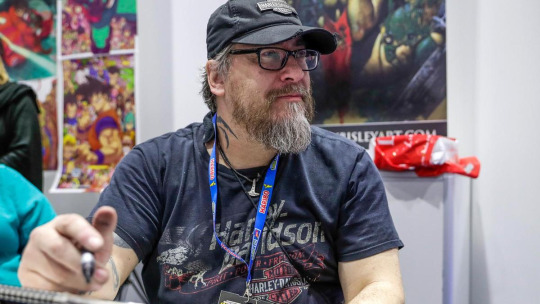
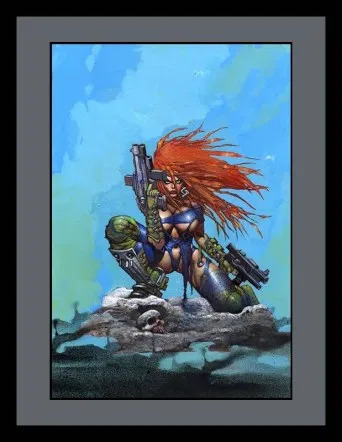
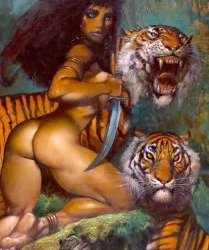
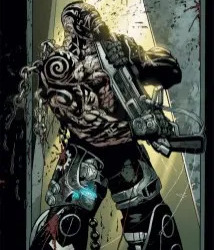
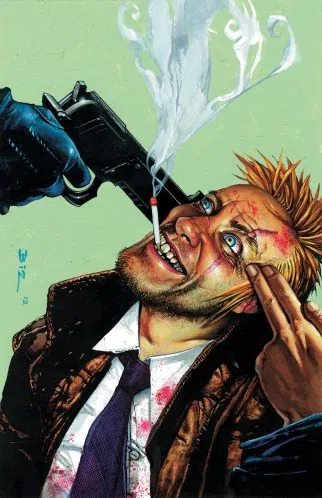
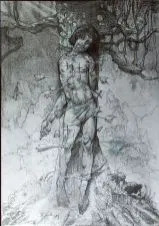

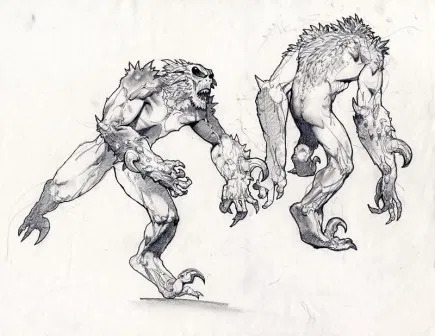
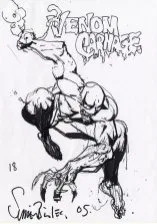
Simon Bisley has cited Frank Frazetta, Gustav Klimt, Salvador Dali, William Turner and Richard Corben as influences. His distinctive style is predominantly rendered using acrylics on bristol board; Simon does not regularly use airbrushes, contrary to popular belief, but he has been known to use car spraypaint and various other household items to achieve his results.
I don’t believe that I will be using all the same equipment as him to do my art piece... No, I will not be using the same equipment as him. Not much of his art work I find very appealing, except for the “Biz Women”. I really like his toning and the small details to muscles of the characters. I find it more amusing than anything.
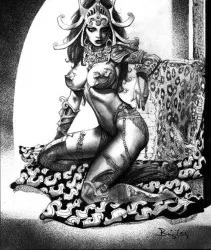
How Bisley portrays women in his art work can be similarly shown in my story, as it is set in a Brothel.
Dan Dare Sci-Fi Mekons
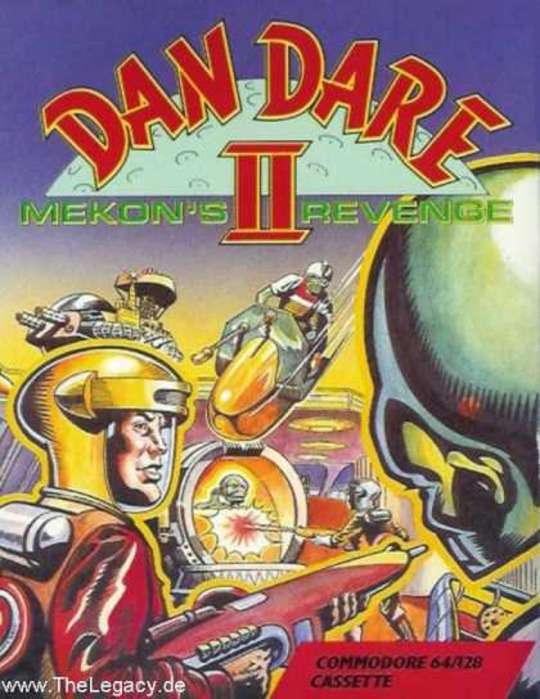

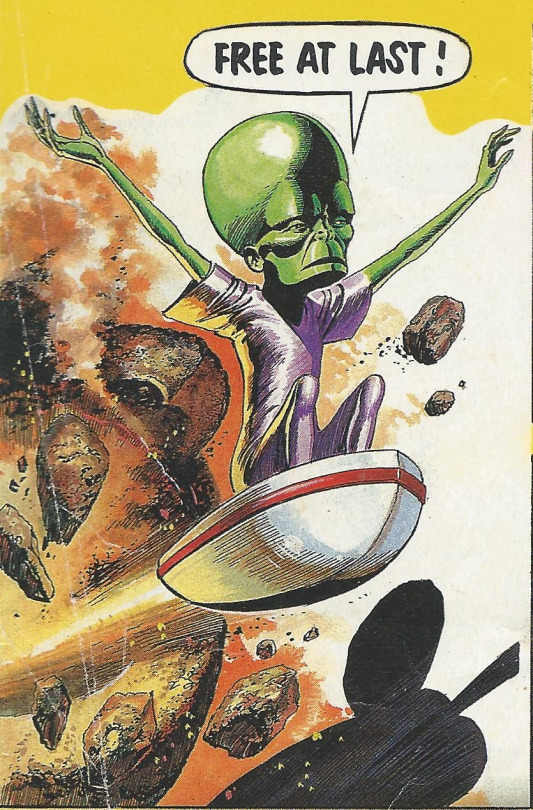
Dan Dare – British Sci-Fi's Sleeping Giant | Old comics
Dan Dare is a British science fiction comic hero, created by illustrator Frank Hampson who also wrote the first stories.
The Mekon (of Mekonta) is the arch-enemy of the British comic book hero Dan Dare, created by Frank Hampson. Apart from Dan Dare himself, he is the only character to appear in every one of the numerous versions of the comic strip that appeared in the Eagle, 2000 AD and Virgin Comics. In the 1950s, roughly every other story featured the Mekon.
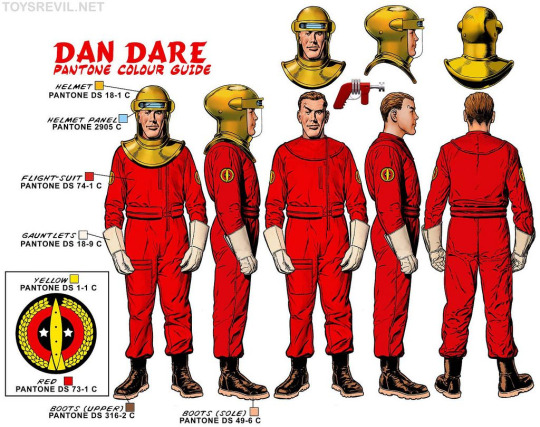
This is a really old Comic Art style with really bold bright colours.
Sin City - Frank Miller
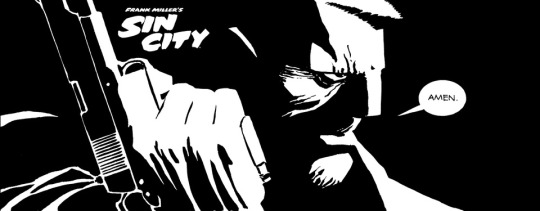
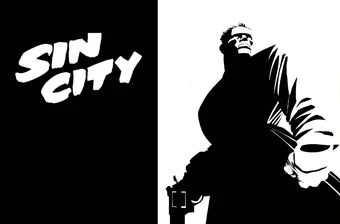
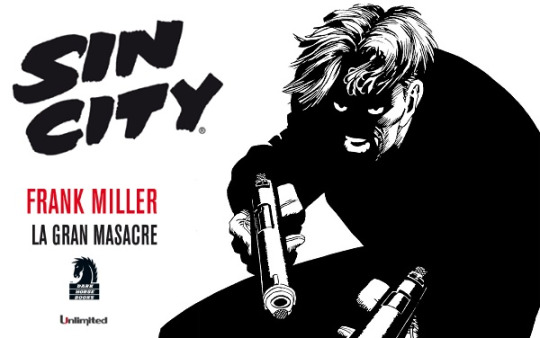
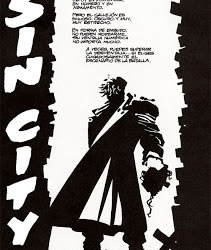
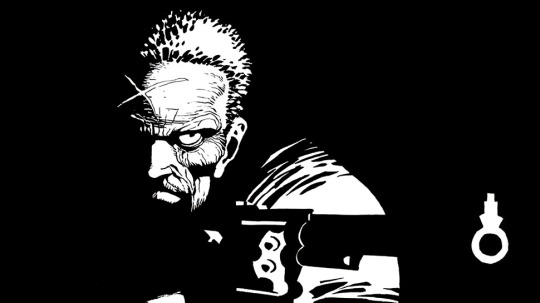

FRANK MILLER is regarded as one of the most influential and awarded professionals in the entertainment industry today, known for his intense, hard-boiled storytelling and gritty noir aesthetic across comics, graphic novels and film.
youtube
Sin City-
Four individuals cross paths when they try to solve their personal problems and fight violence and corruption in the wretched town of Basin City, Washington.
0 notes
